(In spite of) Bordeaux 2014 in barrel: Saint Emilion oak saga continues
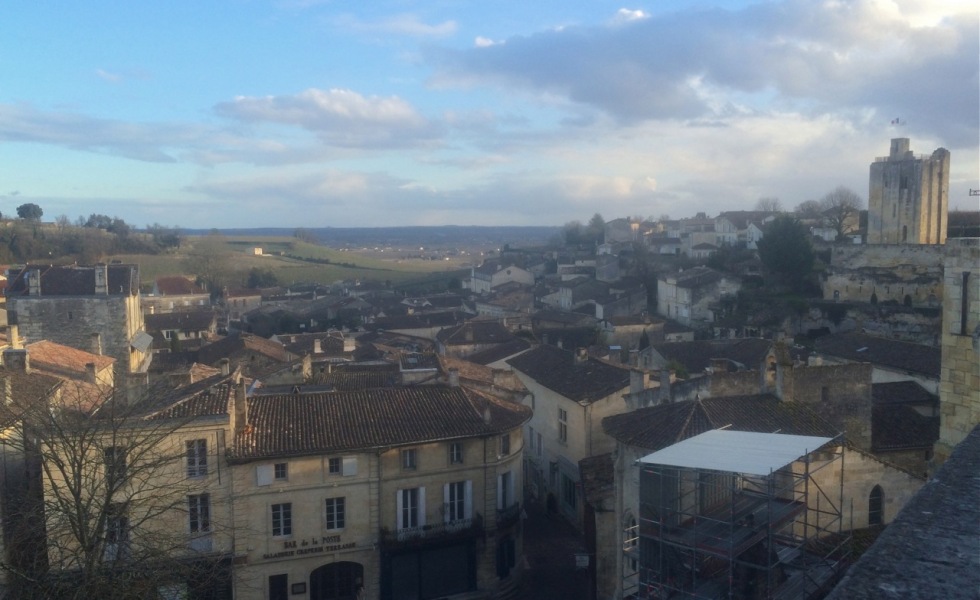
By Panos Kakaviatos for wine-chronicles.com
MAIN BORDEAUX 2014 BARREL TASTING PAGE
Some faves? Belair-Monange, Berliquet, Cheval Blanc, Canon, Corbin, Pavie-Macquin and Quinault l’Enclos
Irony is a word that comes to mind.
Château Quinault L’Enclos counts among 16 estates that had been promoted to grand cru classé in the 2012 classification of Saint Emilion. In contrast to most of these estates, Quinault L’Enclos conveyed particular freshness and elegance. Ironically the wine was once at the vanguard of the modernist movement. But after LVMH acquired it, the style began to change – for the better.
The 2014 barrel sample is just 12.6% alcohol, and château consultant Kees Van Leeuwen explained that that the wine has turned 180 degrees. “Twenty years ago we were proud to have high alcohol level wines, and now we are proud to be low,” he said. The barrel sample showed fresh plum and cherry fruit, but excellent sap and mid-palate concentration: a medium plus body and a smooth medium plus finish with lift. None of the malolactic fermentation was done in new oak and the wine is being matured in 30% new oak. “We do not seek any taste of oak in our wine,” Van Leeuwen stressed.
“I suppose if you are not following fashion, you’ll end up being the next fashion,” he added.
That may be a bit too optimistic. For now.
Sure, the high acidity of the 2014 vintage made it hard for estates to come across as too heady or over rich. As you can read in the tasting notes, I was rather happy with the “vintage character” of 2014 for more than a few Saint Emilions. Interestingly 2014 in this sense is a superior vintage for my classical palate than 2010 or 2009 for some wines in Saint Emilion. Why? You have a “lower alcohol balance” and the extraction of new oak is consequently not as prominent.
It is not so much the percentage of new oak that can be annoying. After all, Canon – a very successful Saint Emilion in 2014 – has 100% new oak. No, what matters is the amount of alcohol in the Merlots and levels of extraction of new oak tannins. In some of the more “modern wines” that is what you feel: extraction. I dislike it.
Even in a vintage marked by freshness like 2014, a significant number of Saint Emilions I tried – both at the blind tastings of the UGCB and the Grande Cercle – seemed to have too much oak tannin extractions. For a few, even to the point of having an oak stave thrust on your gums. I know that some writers love vanilla or saw dust instead of fruit. Not me. Too many Saint Emilion wines (still) seem to be following that fashion.
And speaking of fashion. How about Figeac! I mean, had they hired Michel Rolland 10 years ago, they may have been able to justify their ridiculous pricing. But now it may be too late. Robert Parker no longer is calling the shots. In any case, I rather liked Figeac in 2014. It was hardly my favorite estate. But it was not as dreadful as some classically oriented tasters described it.
Oh, and one more thing: Merlot was not always optimally ripe so there are cases of somewhat tight tannins. Never bitter, but not fully ripe either. So sometimes the problem was not over oaking but rather not enough fruit ripeness.
Wines in bold I liked particularly, when red and bold even more and when underlined, too, wine nirvana.
Blind tasting UGCB at Château Franc Mayne
Château Berliquet: Spicy dark fruit aromatics, seductive, with sweetness coming from oak but seductive enough. Medium sap and concentration for vintage, medium palate is rich, broadening and even a bit like chocolate. Smooth medium plus finish. High acidity but high ripe tannin. Modern delights? Delights nonetheless. 89-92
Château La Tour Figeac: This is sap filled and fresh. Copious juice. Energy. Needs barrel aging to smoothen it. Medium plus body, high acidity, high ripe tannin. Medium finish. Riper than many here. 89-92
Château Larmande: A hint of vegetal on the nose. This is a bit austere on the mid palate. And yet there is inviting red fruit cranberry as well. With a medium body and medium finish. 89-91
Château Franc Mayne: Nose is red fruit but not too expressive. The palate is juicy and tasty. You have some extraction of (oak?) tannin that detracts on the finish. But overall, quite fine as I suspect that it has the matiere to come out better with oak aging. 88-90
Château La Couspaude: Oak derived aromatics. Yet the acidity gives it lift on the mid palate. Then the finish is marked a bit by the oak… 87-89
Château La Gaffeliere: Again we have oak derivation, sweet vanilla but the high acidity keeps it in check. There is some drying tannin on the finish however. 87-89
Château Pavie Macquin: Fine mid-palate sap here. Ripe enough plum but in a good sense. Energy and ripeness. I like this one very much. Surprise, surprise. Here a wine that I have found far too hefty in alcohol and oak in recent years actually doing very nicely, reflecting the freshness of the vintage. Bravo. 90-93
Château La Dominique: There is mid palate sap here as well, with a firm if raw tannin and high acidity. Not sure if it is a bit too astringent on the finish and if the just ripe enough Merlot warrants too high a score however. 89-91
Château Beausejour Becot: Ripe red fruit, plum. Smooth and medium bodied, medium sap, medium concentration. Finish is medium. Cohesive palate. Supple enough, but lacks true excitement. Tasted non blind at Vintex and I liked it more. 89-91+
Château Canon: More substance to this wine, more concentration on the mid palate, which is medium plus. Tannins are somewhat foreboding, with high acidity and medium plus alcohol. There is excellent freshness on the finish, confirming my tasting at the estate in mid March with John Kolasa. Excellent! 91-94
Château Clos Fourtet: Oak derived vanilla on the nose. Fresh and bright mid palate. Medium plus body. A rather modern style balanced by high acidity. Medium finish. 90-92
Château Grand Mayne: A more concentrated style, juiciness more evident, savory and supple too, excellent overall quality of tannic grain. High acidity but more rounded than others here. Nice job and one of my overall favorites in this blind tasting! 90-93
Château Dassault: Wood polish like aromatics. This has a bit of edginess to the tannin, somewhat astringent on the finish. Could the sample have been off? Judgment reserved.
Château Troplong Mondot: This showed oak and foreboding tannin. Ripe fruit and acidity as well, but I think that the balance is not optimal, as it comes across disjointed. Still, lots going on and I think with barrel aging it should be quite good. 89-91
Château Balestard La Tonnelle: Fresh nose. But oak derivation like high toasted barrel, with ashes or rust. Quite astringent oak derived tannin, medium bodied and medium body with linear tart medium finish. 87-90
Château Soutard: High toned cranberry aromatics. Smooth enough tannin on the mid palate, and riper than two preceding wines… But the acidity is high and there is a tartness to the finish. Aout n’a pas fait le moux. 89-91
Château Cap de Mourlin: “Ripe enough” plum… Palate is brisk on the attack. Medium bodied freshness, strawberry but slightly under-ripe impression, high acidity and tannin and medium finish. 87-89+
Château Larcisse Ducasse: Oak-derived aromatics, yet is the fruit slightly riper tasting? Again a slightly more concentrated version of the above, with greater ripeness. Medium plus body, medium plus finish, somewhat drying from the oak on the finish does detract however. 88-90
Château Canon La Gaffeliere: This is balancing act between modern style oak derived tannin and ripe enough fruit and high acidity. Not bad, actually, and methinks that barrel aging will make it more supple. Has mid palate sap. Had tasted non blind as well with similar results. Nice job. 89-92
Château Villemaurine: Dark fruit aromatics. Licorice from the oak. The attack is brisk, high acidity and high tannin yet not astringent and even smooth on the mid palate. The finish is tart but not over tart and lingering although tannins just a bit rustic compared to preceding wine. This sample proved fresher and more interesting than the one I tried non blind at the Vintex negociant tasting. 89-91
Tasted non blind at the estates
I tasted neither Pavie nor Angelus. I recall when they were both good sports and included their wines along with the other premiers grands cru classés, so it was so much easier to get the wines tasted either at the private (now non existant) Groupement or the UGCB. Sorry, but I just did not have time to visit them, but will try to visit both in June, when I go to Vinexpo. I also missed Ausone.
Chateau Quintus: Tasted at La Mission Haut Brion. This has 14.45% alcohol and is both rich and savory on the mid palate, although the balance comes across as more modern in style, with the high alcohol (I prefer wines like Chateau Corbin or Quinault l’Enclos, with a lower alcohol balance). In any case, the high acidity does balance this out, lending red fruit freshness to the medium plus finish that makes it very good. 89-91+
Quinault L’Enclos: Just 12.6% alcohol. “Twenty years ago we were proud to have high alcohol level wines and now we are proud to be low,” remarked consultant Kees Van Leeuwen at the tasting. Of course he was referring to previous owner – and the darling of the Modernist Movement Dr. Alain Reynaud. How times have changed – at least here. Very fresh yet much sap and mid palate concentration. Flavors include ripe plum and cherry. Medium plus body and smooth medium plus finish with lift. Nearly 70% Merlot but also 13% Cabernet Franc and 18% Cabernet Sauvignon. “This is a style that is very different from what it had been [under the direction of Alain Reynaud] some ten years ago. Just about 30% new oak. “If you are not following fashion, you’ll end up being the next fashion,” he quipped. This is delicious! 90-93
Petit Cheval: Just over 50% Merlot and the rest Cabernet Franc. Very brisk and bright red cherry flavors with a delicate mid palate and medium length marked by tonicity. 89-91
Cheval Blanc. Barely over 13% alcohol. Bright red fruit, very berry – like a fruit basket of blueberry, raspberry, cherry and some blackberry. A taut feel on the palate, with much underlying concentration and structure, the wine’s acidity gives the tannins more presence. Indeed, the 3.65 pH is comparable to 2008, but not like the 3.3 pHs of yesteryear, Van Leeuwen remarked. The finish is very long and precise. An excellent wine – the best Saint Emilion I tasted – although does not reach the heights of Petrus or Vieux Chateau Certan. 92-95
Petit Figeac: Since 2012, this has been the easier-to-retain name of the second wine (beforehand dubbed Grange Neuve). This was very pleasing red fruit like wine, with medium tannin and medium acidity, a very smooth and pleasant drink that displayed structure as well as sap. So much so that when I got to the first wine, I wondered “why did they not put more of the second wine in it?” 90-92
Château Figeac: Some controversy over this wine, which noted French critic Bernard Burtschy dubbed a modern Pomerol that is over-ripe, over-oaked and over-concentrated albeit very well made. “Did they have to sell their soul to the devil,” he wrote on his Facebook page the day of his tasting it, referring to the fact that Michel Rolland was hired as chief consultant. Indeed, Rolland is amply quoted in the new vintage brochure… I think the wine shows ample concentration and does not come off as such an aberration for Figeac fans, although the finish annoyed me with that telltale modernist note of extraction and drying on the palate that reveals some of the oak. You know, high alcohol Merlot extracting evident oak tannin… And the wine does have more than its customary level of Merlot, at 40%. A bit like Calon Segur perhaps, in that the stylistic change comes too late – now that Robert Parker has left the scene. The Manoncourt family should have hired Michel Rolland 10 years ago, in that sense. Fellow taster Jane Anson said that it reminded her of the 2010, a great vintage before Rolland entered the picture. That could well be indeed, but, for now, the finish does prevent me from being too enthusiastic about the barrel sample. 90-92
Tasted non blind at Moueix
Chateau Puy Blanquet Saint Emilion Grand Cru: Quite tannic and rich at the same time. A robust hearty wine. Not extracted. Quite amazing actually for its pedigree. 88-90
Chateau La Serre Saint Emilion Grand Cru Classé: Licorice and dark plum. Savory and juicy. Nice job. 88-90
Chateau Belair Monange: A bit restrained on the nose but the palate is juicy and friendly with a limestone like freshness that is very pleasing. Interesting! And the texture is smooth without being glossy. The name remains a bit silly but the wine is very, very nice. 90-93
Saint Emilion GCC tasted blind at Grande Cercle des Vins de Bordeaux
OK, here we enter the oak ridden category sadly. Some fine wines, too, however…
Château Fonplegade: Tasted blind. Rather coffee grind like texture, tannins noticeably grainy. Oak stave notes, but there is high intensity of flavor even though it lacks charm. 86-88
Château Bellefort Belcier: Tasted blind. Not as dark, less glycerine in appearance. The aromatics are almost floral compared to Fonplegade tasted just before. The attack is brisk, then the mid palate has medium plus body with just a touch of oak extraction detracting on the finish, which is a bit astringent, but overall this has potential. 88-90+
Château Fleur Cardinale: Tasted blind. It has a heavy aspect and feels a bit leaden on the palate. And I feel my gums assaulted. 84-86
Château Grand Corbin d’Espagne: Tasted blind and at Vintex tasting. While at the blind tasting, the extraction seemed stronger, the sample at Vintex was juicier and more “classic” in style. Hmmmm. Benefit of the doubt! 88-91
Château Clos la Madeleine: Tasted blind. Wow this one is actually rather smooth and I do not feel the extraction. Medium flavor intensity and medium body and finish. The tannins are a bit tough on the finish though. 87-90
Château de Pressac: Tasted blind. Darker color than Clos la Madeleine, tasted just before. It feels comparatively extracted, but has quite a bit of body and structure. Not bad, but borderline “modern”. Dark chocolate and touch of oak stave on the finish. Similar results when tasted at the estate in March. 87-90
Château Yon-Figeac: Tasted blind. Underripe aromatics. The palate is a touch metallic and medium bodied. There is medium flavor intensity with plum fruit. But the finish is medium minus. 86-88
Château Faugeres: Blind tasting. Juicier fruit aromas. Rich and coffee like. A bit hard on the finish, but not as extracted as some of the others tasted in this series. 88-91
Château Barde-Haut: Tasted blind. Licorice. Blackberry. Mid palate is full bodied, but what’s missing is veritable sap, and it culminates in a drying finish. Maybe things will arrange themselves once in bottle. 87-90
Château Sansonnet: Tasted blind. Has a brisk attack with blackberry and an expansive palate, similar to the Barde-Haut, tasted just before, but a more drying finish, as if the oak is just too dominating. Why oh why? 86-88
Château Fonroque: Tasted blind, just after Sansonnet. This has more juiciness but seems just a tad disjointed. Still, I like the elements and it should come together nicely once in bottle. 88-90+
Château Fombrauge: Tasted blind and I am rather amazed that I liked it so much… Rather rich and fruit driven. Does not dry as much on the finish as some of the others tasted at the Cercle tasting. Blackberry fruit. Almost brambly. Some oak spice intrusion nonetheless. Long finish. 89-92
Château Le Prieuré: Tasted blind. Rich enough. Actually quite cohesive, with mid palate sap. Structure is enrobed with juiciness. Nice! 88-91
Château La Marzelle: Tasted blind. Coarse and aggressive. Drying finish. Pass.
Château Peby Faugeres: Tasted blind and has fruit but with hard tannins on the finish. 86-88
Château Destieux: Tasted blind and again at Vintex tasting. Quite a powerful wine, juicy and yet … somewhat drying on the finish. 88-90
Château Laroze: Tasted blind. Candied aspect. Juiciness and a willingness to perhaps drink more… Not bad! 88-90
Château Lynsolence: Tasted blind and was accidentally served among the Lalande de Pomerol flight. I was told that it was Saint Emilion as #75 and immediately I got an overly extracted feel to it… WTF! Pass.
 Wine Chronicles
Wine Chronicles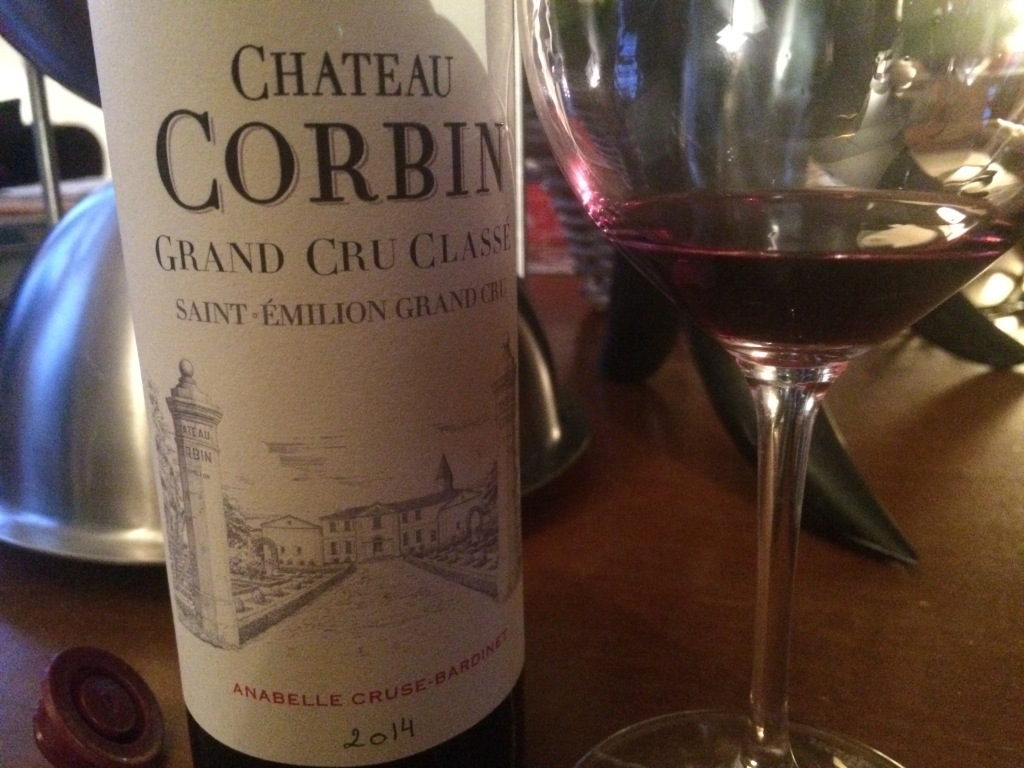
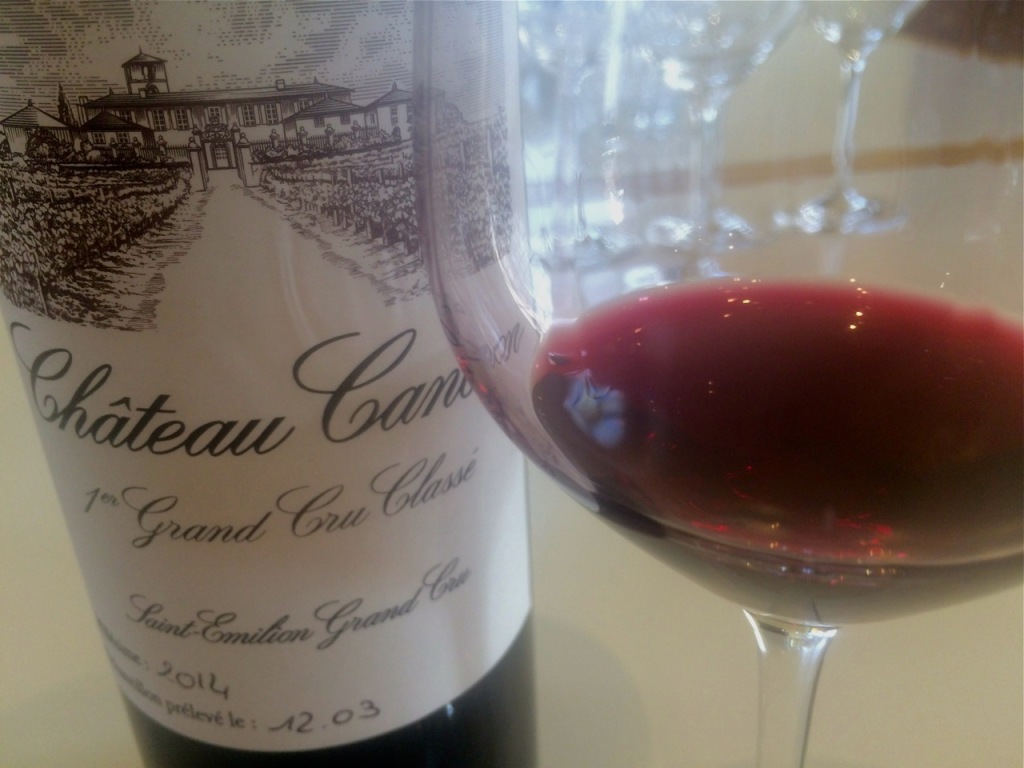
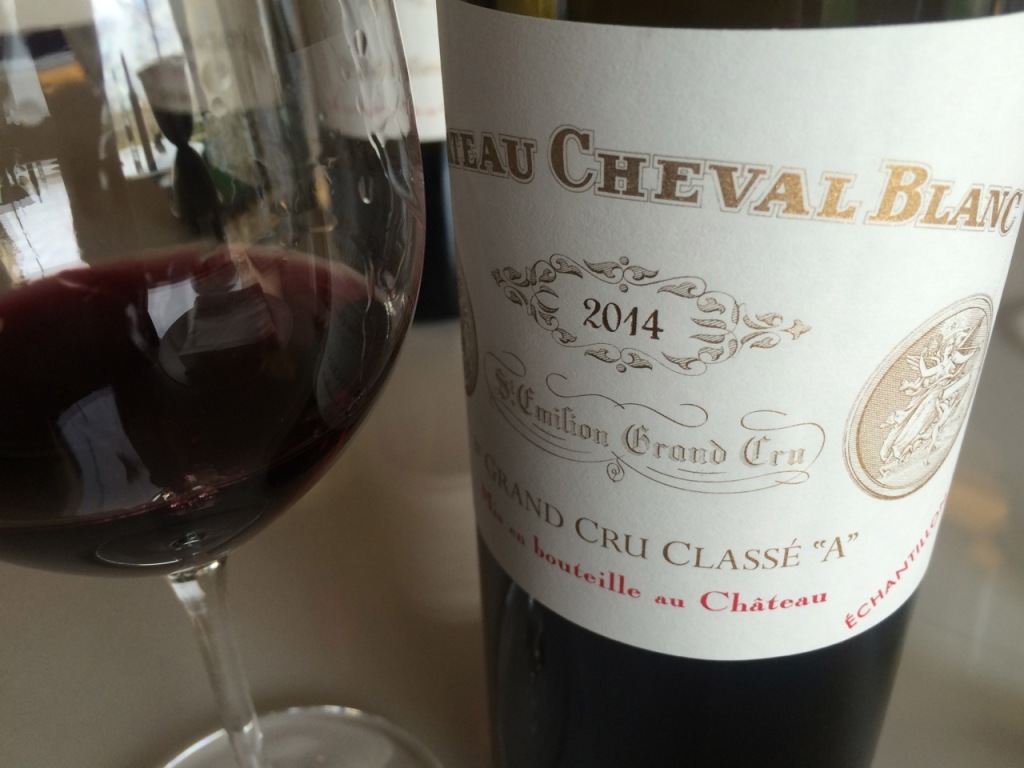
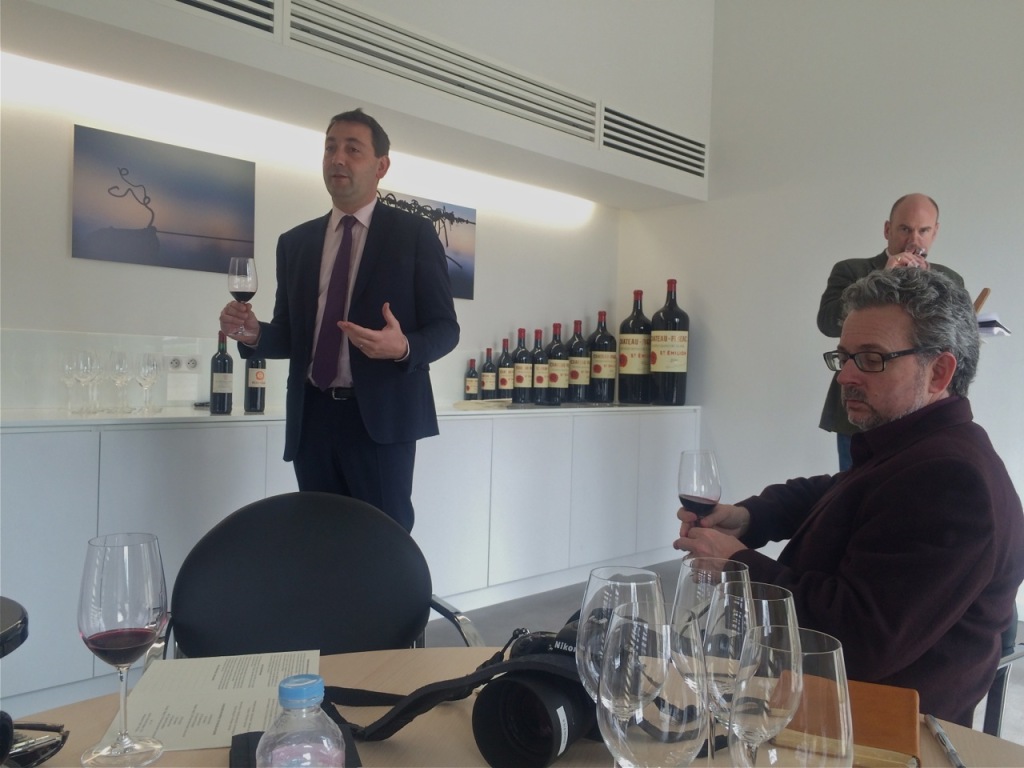
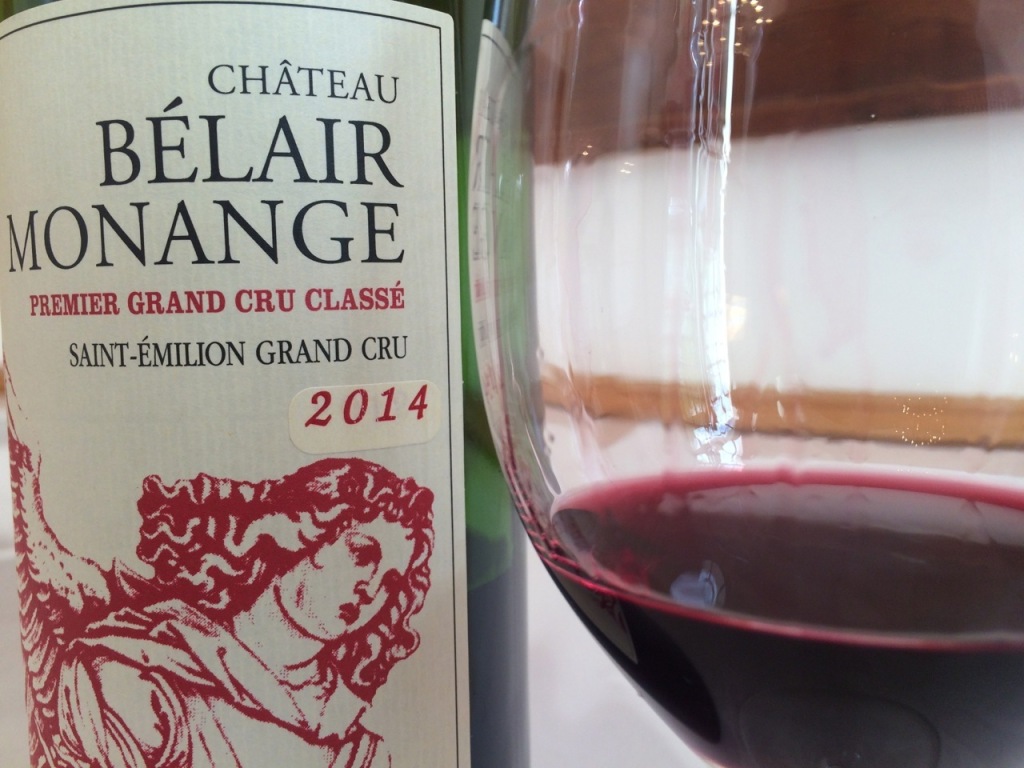
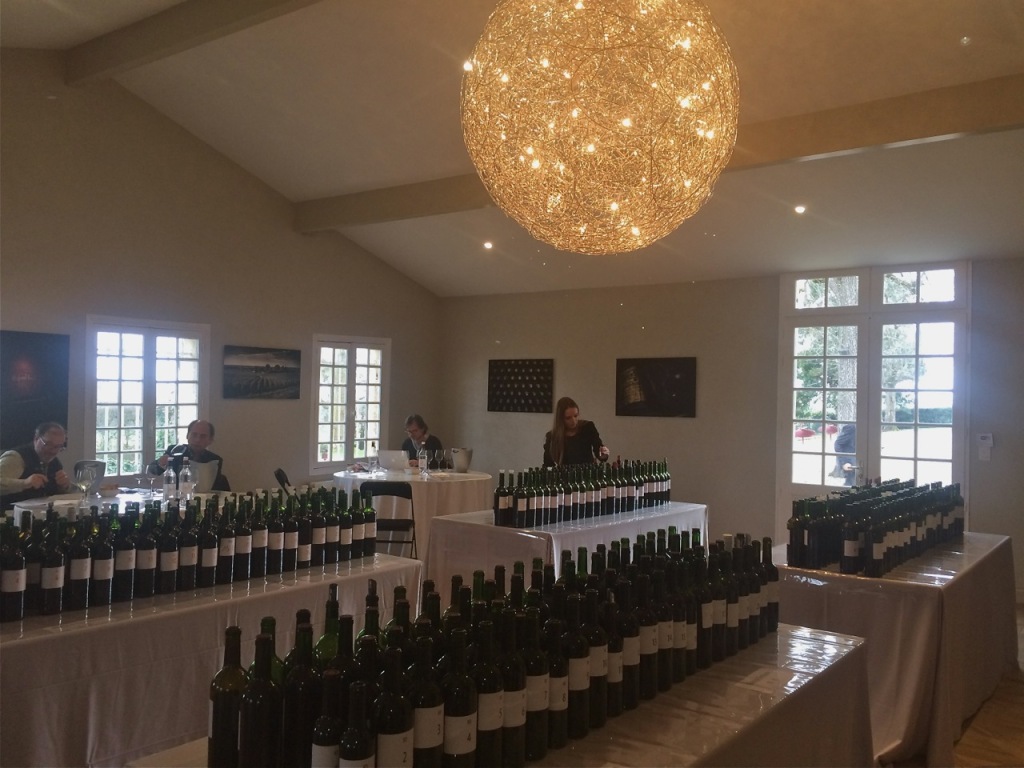

Bonjour Panos,
A quand tes commentaires sur les appellations Moulis/Listrac ?
Cyril
Salut Cyril! Bientôt, dans quelques jours. Merci!